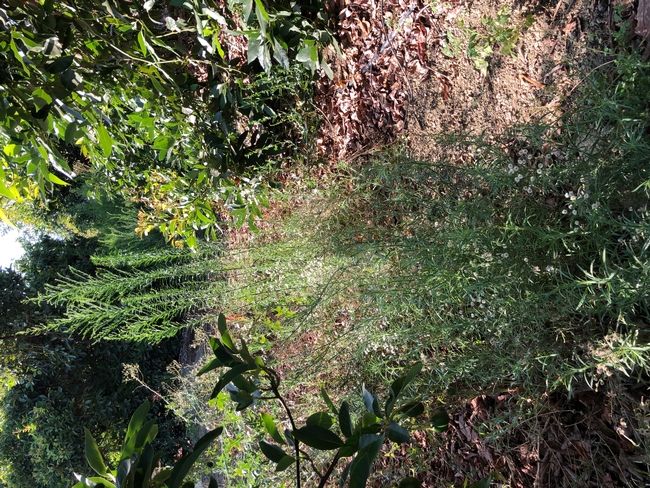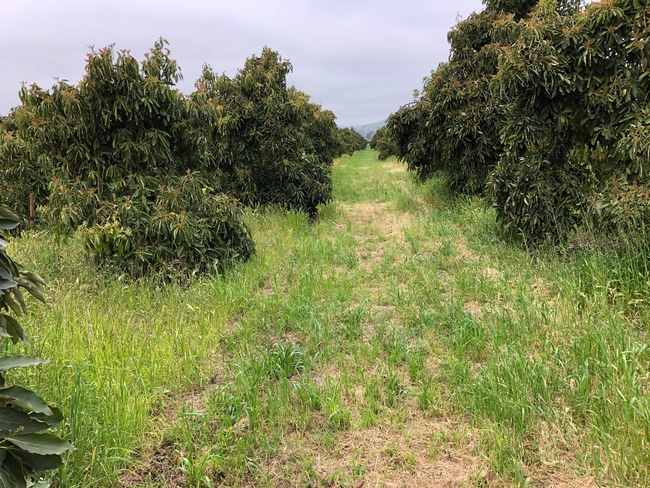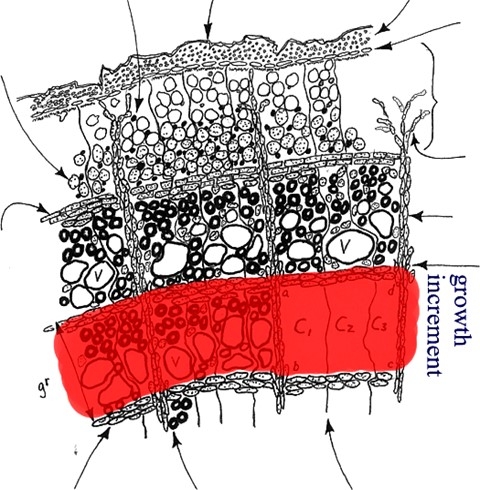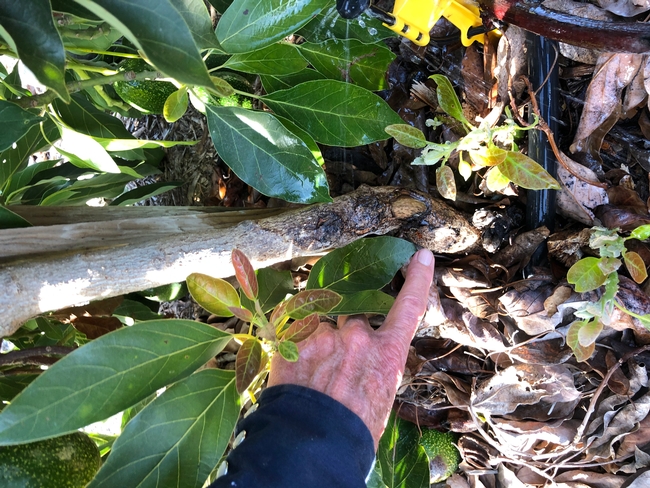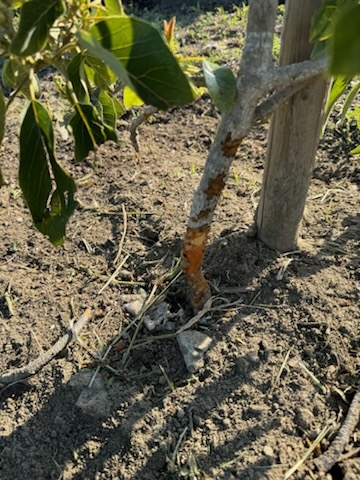With all the rain last year, even extending into August and now with the rains since December there is a lot of natural ground cover growing, When it gets out of hand, we call it weedy. It might still serve the purpose of protecting the ground from erosion, but it can become an impenetrable mess and if allowed to go into summer, a major fire hazard. In the case of some young orchard, the malva and mustard is bigger than the trees themselves. Getting control of them before they get woody and go to seed is easier earlier than later. So it's time to do something about them if you haven't done so already.
A common practice on flat ground is to mow the middles and then weed whack/whip the tree row up to and around the tree trunk. In the case of trees that have their canopies down to the ground or near the ground or that have created a thick leaf mulch, there's not usually much weedy growth near the trunk. Then weed whacking around the canopy is not much of a problem. If on a slope like most avocados, it's a big, expensive, laborious, hot, sweaty, arduous process of weed whacking. Just waiting long enough for the leaf mulch to create a barrier to weed growth and for the canopies to grow out to rob the sun from the surface undergrowth.
In young trees without a large canopy, it can be a really difficult process of getting those weeds near the trunk. Care must be taken to avoid damage to the trunk. In a couple of recent examples, weed whacking got right up and on the trunks and significant damage was done to the trees. When a wound occurs in any tree, a process kicks in to generate tissue to cover the wound, much like what happens with humans and wound cuts. There's a scar left, but it heals over. If the wound is too large, many trees cant cover the woody tissue fast enough. The wood beneath the cambium ( the green tissue below the bark) is prone to fungal infection and eventually the fungus eats away at the interior of the tree. If the wound is large enough and girdles the tree, all the nutrients from the leaves feeding the roots is cut off. The photosynthate sugars that keep the roots functioning, and the roots stop doing what roots do. This is absolutely true is citrus and most other orchard tree crops. But not avocado.
When making a cross section of most trees, it's possible to see the growth rings – the growth increments that appear each year. The tree starts and stops growth each year and it's possible to clearly identified in what year there was more or less growth. In long lived trees like redwood, it's possible to identify years when certain events happened – the year of Lincoln's Gettysburg Address, for example. This growth habit is called ring porous.
In the case of avocado, it has a growth habit called diffuse porous. There is growth throughout the year and the rings are nor clearly delineated, if at all. It's because of this possible active growth occurring, that the avocado can often cover over damage that is quite extensive. After a fire, given time, mature avocado trees can summon up energy to recover to a great extent. It's not so true of young trees, however. Avocados still have a greater regenerative capacity than a lemon tree, and if the damage is to just one side of the tree, there's a very good chance of recovery.
But these young tree are severely impaired. They do have a chance of recovery, but the damage is extensive and the trunk is fully girdled. Only time will tell if they do recover. If the tree were only a year old, it would be a good idea to pull them and start over. But a number of these trees are three years old and have had a lot of investment in them besides their initial nursery cost – pruning, weeding, irrigation, fertilization, etc. It is heart breaking to see damage like this after so much attention has been paid to them.
And the best thing is to let the tree recover on its own. Use of pruning paint actually impairs tissue regeneration. The grower asked if a kaolin protectant like Surround might be used to provide some sun protection. Since that breathes, it might be a good idea. It might also be a good idea to apply some trunk wraps. These were taken off in order to prevent earwig and snail harbor which can cause significant damage to young trees. But they also provide protection from overly aggressive weed whackers. It is always a compromise when making these decisions.
